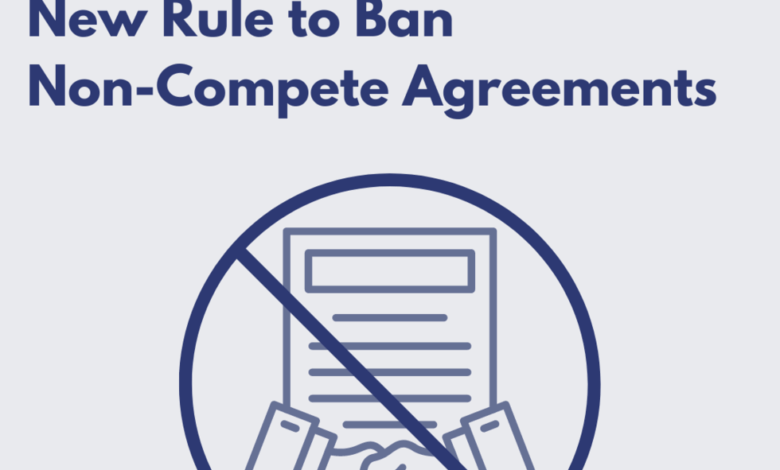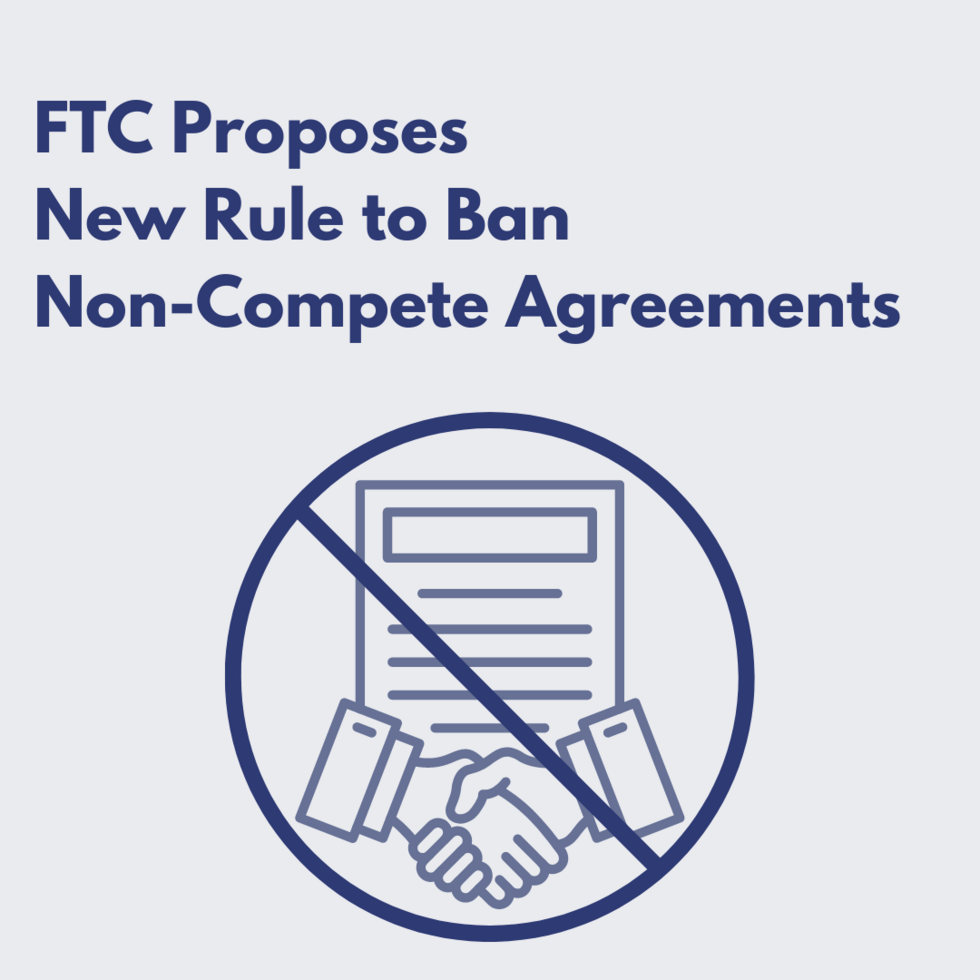
Noncompete Ban Apply Nonprofit Hospitals?
Noncompete ban apply nonprofit hospitals? That’s a question sparking a lot of debate right now. We’re talking about the restrictions placed on doctors, nurses, and other healthcare professionals working for non-profit hospitals, preventing them from working for competitors after leaving their jobs. It’s a complex issue touching on patient care, competition, and the very nature of non-profit healthcare.
This impacts everything from access to care in underserved communities to the overall cost of healthcare. Imagine a skilled surgeon forced to move far away because of a non-compete agreement, leaving a community without essential expertise. Or consider the effect on salaries when competition for skilled workers is limited. This post dives into the arguments for and against banning non-compete agreements in non-profit hospitals, exploring the ethical and practical considerations involved.
The Scope of Non-Compete Agreements in Healthcare

Source: nextep.com
Non-compete agreements are a common feature in healthcare employment contracts, aiming to protect an employer’s business interests by restricting a former employee’s ability to compete after leaving their employment. These agreements, however, are subject to significant legal scrutiny and vary considerably in their enforceability depending on jurisdiction and specific contract terms. Understanding the legal basis, typical clauses, and state-specific variations is crucial for both employers and employees in the healthcare sector.
Legal Basis for Non-Compete Agreements in Healthcare Employment Contracts
The legal basis for enforcing non-compete agreements rests on the principles of contract law. Essentially, a valid non-compete agreement must be supported by consideration—something of value exchanged between the employer and employee. This consideration often takes the form of employment itself, a promotion, specialized training, access to confidential information, or a severance package. Courts generally uphold non-compete agreements if they are deemed reasonable in scope, duration, and geographic area, and if they protect a legitimate business interest of the employer, such as trade secrets or customer relationships.
Unreasonable restrictions are typically deemed unenforceable as they violate public policy principles favoring free competition and employee mobility.
Typical Clauses in Non-Compete Agreements for Healthcare Professionals
Non-compete agreements for healthcare professionals typically include clauses defining the geographic area covered by the restriction, the duration of the restriction (e.g., one to three years), and the types of activities prohibited. These restrictions often specify that the employee cannot work for a competitor, solicit the employer’s clients or patients, or open a competing practice within the defined parameters.
Some agreements also include clauses prohibiting the disclosure of confidential information, such as patient lists, pricing strategies, or proprietary treatment methods. The specific clauses vary widely depending on the employee’s position, seniority, and the nature of the employer’s business. For example, a surgeon might face broader restrictions than a medical assistant.
Enforceability of Non-Compete Agreements Across Different States
The enforceability of non-compete agreements varies significantly across different states. Some states, like California, are generally hostile to non-compete agreements and rarely enforce them, except in very limited circumstances involving the sale of a business. Other states, like Texas, tend to be more receptive to enforcing non-competes, provided they meet specific reasonableness requirements. This difference stems from variations in state laws and judicial interpretations of public policy considerations.
The specific facts of each case, including the employee’s role, the employer’s business interests, and the terms of the agreement, all play a significant role in determining enforceability.
Comparison of Legal Landscapes Across Five States
The following table compares the legal landscape of non-compete agreements across five states, highlighting key differences in their approaches:
| State | General Approach to Non-Compete Enforceability | Key Considerations for Enforceability | Relevant Case Law (Example) |
|---|---|---|---|
| California | Generally unenforceable, except in limited circumstances (e.g., sale of a business) | Strict scrutiny; must protect a compelling business interest; must be narrowly tailored. | Edwards v. Arthur Andersen LLP (2008) |
| Texas | Generally enforceable if reasonable in scope, duration, and geographic area. | Reasonableness is key; courts consider the employer’s legitimate business interests. | Marsh v. General Motors Corp. (1999) |
| New York | Enforceable if reasonable and supported by consideration; courts consider the specific facts of each case. | Balancing of employer’s interests and employee’s right to work; scrutiny of geographic and time restrictions. | BDO Seidman v. Hirshberg (1984) |
| Florida | Enforceable if reasonable; courts often consider the employee’s level of access to confidential information. | Reasonableness is evaluated based on factors including duration, geographic scope, and the type of protected information. | Robert Half International, Inc. v. Reyes (2006) |
| Illinois | Enforceable if reasonable; courts consider the totality of the circumstances. | Balance between employer’s legitimate business interests and employee’s right to earn a living; scrutiny of restrictive covenants. | Reliable Fire Equipment Co. v. Arredondo (2008) |
Nonprofit Hospitals and the Public Interest
Nonprofit hospitals, while dedicated to serving their communities, operate within a complex framework where their internal interests sometimes clash with the broader public interest. The use of non-compete agreements, intended to protect their workforce and investments, can inadvertently create barriers to accessible and affordable healthcare. This section examines the unique considerations surrounding non-compete agreements in the context of nonprofit hospitals and their impact on patient care.Non-compete agreements and their effect on patient access to care are a critical concern.
These agreements, which restrict healthcare professionals from working for competing institutions within a specific geographic area and time frame, can limit the availability of specialists and other crucial medical personnel. This scarcity can lead to longer wait times for appointments, reduced access to specialized care, and ultimately, poorer health outcomes for patients, particularly in underserved communities.
The Impact of Non-Compete Agreements on Healthcare Costs
Non-compete agreements can stifle competition among healthcare providers. By limiting the movement of skilled professionals, these agreements reduce the number of providers competing for patients, potentially leading to higher prices for services. The lack of competition can also inhibit innovation and the adoption of more cost-effective treatment methods. This is particularly problematic for nonprofit hospitals, which are expected to operate in a fiscally responsible manner while prioritizing patient care.
The recent noncompete ban affecting nonprofit hospitals is a huge deal, especially considering the staffing challenges already faced by these institutions. The impact is likely to be felt most acutely in areas with limited healthcare access, like those discussed in this insightful article on Rural Hospitals Labor Delivery & where workforce shortages are already crippling services.
Ultimately, the ban’s effect on nonprofit hospital recruitment and retention remains to be seen, but it’s definitely a conversation worth having.
The reduced competition can result in less incentive to negotiate lower prices with insurers, ultimately burdening patients and the healthcare system.
Non-Compete Agreements and Healthcare Professionals in Underserved Areas
The recruitment and retention of healthcare professionals in underserved areas are already significant challenges. Non-compete agreements exacerbate this problem. Physicians and other healthcare professionals might be hesitant to relocate to underserved areas if they are bound by restrictive covenants that limit their future employment options. This reluctance can leave these communities with limited access to essential healthcare services, perpetuating existing health disparities.
For example, a rural hospital struggling to attract a cardiologist might find it difficult to compete with larger urban hospitals that can offer more lucrative opportunities without the constraint of non-compete agreements.
Hypothetical Scenario: A Nonprofit Hospital’s Dilemma
Imagine a small, nonprofit hospital in a rural community that employs a highly skilled surgeon. The hospital invests significantly in this surgeon’s training and development. To protect its investment, the hospital enforces a non-compete agreement, preventing the surgeon from practicing within a 50-mile radius for two years after leaving the hospital. However, the nearest hospital offering similar services is 75 miles away.
If the surgeon leaves the nonprofit hospital for personal or professional reasons, the rural community is left without access to specialized surgical care, highlighting the direct conflict between the hospital’s desire to protect its investment and the community’s need for accessible healthcare. This scenario illustrates the ethical and practical dilemmas presented by non-compete agreements in the context of nonprofit hospitals and the public good.
The Impact of a Non-Compete Ban on Nonprofit Hospitals
The debate surrounding non-compete agreements in healthcare is complex, particularly when considering their application to nonprofit hospitals. These institutions, dedicated to community service, operate under a different set of pressures than for-profit entities. A ban on non-compete agreements would significantly alter the landscape for nonprofit hospitals, presenting both potential advantages and disadvantages that must be carefully weighed.
Potential Benefits of a Non-Compete Ban for Nonprofit Hospitals
Eliminating non-compete clauses could unlock several potential benefits for nonprofit hospitals and the communities they serve. This would fundamentally shift the dynamics of physician recruitment and retention, potentially leading to increased access to care and improved healthcare outcomes.
- Increased Physician Mobility and Access to Care: A ban would allow physicians to more easily transition between healthcare providers, potentially increasing competition and reducing healthcare deserts, particularly in underserved areas. Physicians may be more willing to relocate to areas with limited specialists if they are not bound by restrictive covenants.
- Enhanced Recruitment and Retention: The removal of non-compete agreements could make it easier for nonprofit hospitals to attract and retain qualified physicians, especially in competitive markets. This is particularly relevant for smaller hospitals struggling to compete with larger systems offering lucrative compensation packages.
- Greater Competition and Lower Healthcare Costs: Increased physician mobility could foster competition among healthcare providers, potentially leading to more affordable healthcare services for patients. With more providers available, the market forces of supply and demand might exert downward pressure on prices.
- Improved Patient Outcomes: Increased access to specialists and a more competitive healthcare market could contribute to improved patient outcomes. Patients would have a wider choice of providers, leading to better care and potentially faster access to treatment.
Potential Negative Consequences of a Non-Compete Ban for Nonprofit Hospitals
While the potential benefits are significant, a non-compete ban could also negatively impact nonprofit hospitals, especially those with limited resources. The potential loss of key personnel and the associated costs could severely strain smaller institutions.
- Loss of Key Personnel and Institutional Knowledge: Without non-compete agreements, nonprofit hospitals may experience a higher turnover rate among experienced physicians. This loss of institutional knowledge and established patient relationships could disrupt operations and negatively impact patient care.
- Increased Recruitment and Training Costs: The need to constantly recruit and train new physicians would place a significant financial burden on nonprofit hospitals, particularly smaller ones with limited budgets. This could divert resources away from other essential services.
- Reduced Investment in Physician Development: Nonprofit hospitals may be less inclined to invest heavily in physician training and development if they cannot ensure a return on investment through non-compete agreements. This could hinder the growth and advancement of medical professionals.
- Difficulty Competing with Larger Systems: Smaller, rural nonprofit hospitals might struggle to compete with larger, wealthier hospital systems that can offer more attractive compensation packages and other incentives to attract and retain physicians, even without non-compete agreements. This could exacerbate existing disparities in healthcare access.
Comparative Impact on Small, Rural vs. Large, Urban Nonprofit Hospitals
The impact of a non-compete ban would likely differ significantly between small, rural nonprofit hospitals and their larger, urban counterparts. Small rural hospitals, often facing staffing shortages and limited resources, would be particularly vulnerable to the potential negative consequences. Large urban hospitals, with greater resources and a larger pool of potential recruits, might be better positioned to adapt to the changes.
The recent ban on non-compete agreements for nonprofit hospitals is a big deal, impacting how these institutions recruit and retain staff. This shift could be further complicated by advancements in AI-powered healthcare tech, like the integration of Nuance’s generative AI scribe with Epic EHRs, as described in this article: nuance integrates generative ai scribe epic ehrs. Ultimately, the efficiency gains from such technology might influence the need for restrictive employment contracts within nonprofit hospitals, making the impact of the non-compete ban even more complex.
For example, a small rural hospital losing its only cardiologist to a larger system could face a significant crisis, while a large urban hospital might absorb the loss with less disruption. The competitive landscape and access to specialists would be significantly impacted in rural areas, potentially widening the existing healthcare disparities.
Alternative Strategies for Protecting Hospital Interests
Non-compete agreements have long been a contentious issue in healthcare, particularly for nonprofit hospitals. While they aim to protect investments in employee training and sensitive information, their effectiveness and ethical implications are increasingly debated. Fortunately, several alternative strategies exist to safeguard a hospital’s interests without resorting to potentially restrictive non-compete clauses. These approaches focus on protecting specific assets and fostering a culture of loyalty and ethical conduct.
Exploring alternative methods allows nonprofit hospitals to maintain a competitive edge while aligning their practices with the public interest. By focusing on protecting specific assets rather than restricting employee mobility, these strategies can be more effective and less legally vulnerable.
Non-Disclosure Agreements
Non-disclosure agreements (NDAs) are a crucial tool for protecting confidential information. These legally binding contracts obligate employees to maintain the secrecy of sensitive data, such as patient records, research findings, and internal business strategies. Effective NDAs are comprehensive, clearly defining what constitutes confidential information and outlining the consequences of breaches. They often include provisions for ongoing confidentiality even after employment ends.
While an NDA doesn’t prevent an employee from working for a competitor, it significantly limits the potential harm caused by the unauthorized disclosure of sensitive information. For example, a hospital could use an NDA to protect the details of a new surgical technique developed in-house, preventing its premature release to a competitor. Strong enforcement mechanisms, including financial penalties and legal action, are essential to deter breaches.
Contractual Clauses Regarding Intellectual Property
Hospitals often invest significantly in developing intellectual property (IP), such as new medical devices, treatment protocols, or software applications. Contractual clauses can effectively protect these assets. These clauses should clearly delineate ownership of IP created during employment, specifying that any inventions or innovations developed using hospital resources belong to the institution. The contracts can also address the use and licensing of this IP, ensuring the hospital retains control and benefits from its creations.
For instance, a contract could stipulate that any software developed by an employee using hospital equipment and during work hours is the property of the hospital. This approach prevents the employee from using or selling the software to a competitor without the hospital’s consent.
Alternative Strategies Table
| Strategy | Advantages | Disadvantages | Example |
|---|---|---|---|
| Enhanced Employee Training Programs | Increases employee loyalty, improves skills, reduces turnover | Can be expensive, requires ongoing investment | Offering specialized certifications and advanced training in cutting-edge medical technologies. |
| Stronger Internal Policies and Procedures | Reduces risk of information leakage, fosters ethical behavior | Requires ongoing monitoring and enforcement | Implementing strict data security protocols and regular employee training on confidentiality. |
| Targeted Recruitment and Retention Bonuses | Attracts and retains high-value employees | Can be expensive, may not be feasible for all hospitals | Offering signing bonuses or retention incentives to key personnel in high-demand specialties. |
| Non-Disclosure Agreements (NDAs) | Protects confidential information, enforceable legally | May not prevent competition, requires careful drafting | Using NDAs to protect details of a new clinical trial or research findings. |
Ethical Considerations of Non-Compete Agreements in Healthcare

Source: lawlytics.com
Non-compete agreements in healthcare present a complex ethical landscape, forcing us to weigh the interests of healthcare institutions against the well-being of patients and the professional autonomy of healthcare providers. The potential for conflict is significant, particularly in the context of nonprofit hospitals whose mission is ostensibly dedicated to public service. This section explores the ethical implications of these agreements, focusing on potential conflicts and the role of professional organizations in navigating this challenging terrain.
Restricting Healthcare Professionals’ Ability to Practice
Restricting a healthcare professional’s ability to practice their profession raises serious ethical concerns. The core principle of beneficence, the ethical obligation to act in the best interest of the patient, is potentially undermined when a non-compete agreement prevents a physician or other healthcare provider from providing care to patients in need, especially in underserved areas. This restriction can limit patient access to potentially preferred or specialized care, impacting the quality of care received and potentially causing harm.
Furthermore, it can impede a healthcare professional’s professional development and growth, limiting their ability to hone their skills and contribute fully to the field. The ethical principle of autonomy, the right of individuals to make their own choices, is also challenged, as the non-compete agreement restricts the professional’s ability to freely choose where and how to practice their profession.
The recent ban on non-compete agreements for nonprofit hospitals is a game-changer, potentially impacting everything from recruitment to innovation. This shift is especially interesting considering the advancements highlighted in a recent study, study widespread digital twins healthcare , which could revolutionize patient care and data sharing. Ultimately, how this ban affects the adoption of such technologies in nonprofit hospitals remains to be seen.
Conflicts Between Hospital Interests and Patient Interests, Noncompete ban apply nonprofit hospitals
A significant ethical conflict arises when the interests of the hospital, seeking to protect its market share and financial stability through non-compete agreements, clash with the interests of the patient. For instance, a patient might strongly prefer a specific physician known for their expertise and compassionate care, only to find that physician restricted from treating them due to a non-compete clause.
This places the hospital’s financial interests above the patient’s right to choose their care provider, creating a clear ethical dilemma. The potential for this conflict is heightened in situations where the patient’s condition requires specialized care that only a limited number of physicians possess, further restricting access and potentially jeopardizing the patient’s well-being.
Role of Professional Organizations in Addressing Ethical Challenges
Professional organizations, such as medical societies and nursing associations, play a crucial role in addressing the ethical challenges posed by non-compete agreements. They can establish ethical guidelines and best practices for the use of these agreements, advocating for patient-centered approaches that prioritize access to care. Professional organizations can also provide education and resources to healthcare professionals and hospital administrators, promoting a deeper understanding of the ethical implications of non-compete agreements and fostering open dialogue on responsible practices.
Furthermore, these organizations can serve as a platform for advocacy, pushing for legislative changes or regulatory reforms that better protect the interests of both patients and healthcare professionals.
Hypothetical Ethical Dilemma in a Nonprofit Hospital
Imagine Dr. Anya Sharma, a highly skilled cardiologist at a nonprofit hospital, leaves her position to join a competing hospital in a neighboring town. She is then sued by her former employer for breach of contract due to a non-compete agreement. The agreement prevents her from practicing cardiology within a 50-mile radius for two years. This leaves patients in the neighboring town with limited access to specialized cardiology services, particularly those requiring Dr.
Sharma’s expertise. The nonprofit hospital, despite its mission of service, is prioritizing its financial interests over the potential harm to patients in need of specialized cardiac care. This situation illustrates the ethical tension between a hospital’s desire to protect its financial interests and its commitment to providing high-quality care to the community it serves. The dilemma highlights the need for a careful ethical evaluation of non-compete agreements in the context of nonprofit hospitals.
End of Discussion: Noncompete Ban Apply Nonprofit Hospitals
The debate around non-compete agreements in nonprofit hospitals is far from over. While protecting a hospital’s investment in training is understandable, the potential negative impact on patient access and competition is a serious concern. Ultimately, finding a balance between protecting institutional interests and ensuring equitable access to quality healthcare remains a crucial challenge. We need to consider creative solutions that foster both innovation and patient well-being.
What are your thoughts?
Key Questions Answered
What are the typical clauses in a healthcare non-compete agreement?
These agreements often specify geographic restrictions, time limitations on working for a competitor, and types of healthcare services that are restricted. The specifics vary widely.
How does a non-compete ban affect recruitment in rural areas?
A ban could make it easier to recruit healthcare professionals to rural areas, as it removes a barrier to employment. However, it might also make it harder for smaller hospitals to retain staff.
Are non-disclosure agreements a sufficient alternative to non-competes?
NDAs protect confidential information, but they don’t prevent someone from working for a competitor. They are often used in conjunction with other strategies, not as a direct replacement.
What are the ethical concerns surrounding non-competes in healthcare?
The primary ethical concern is the potential restriction of patient access to care, prioritizing the hospital’s financial interests over the patient’s needs.





